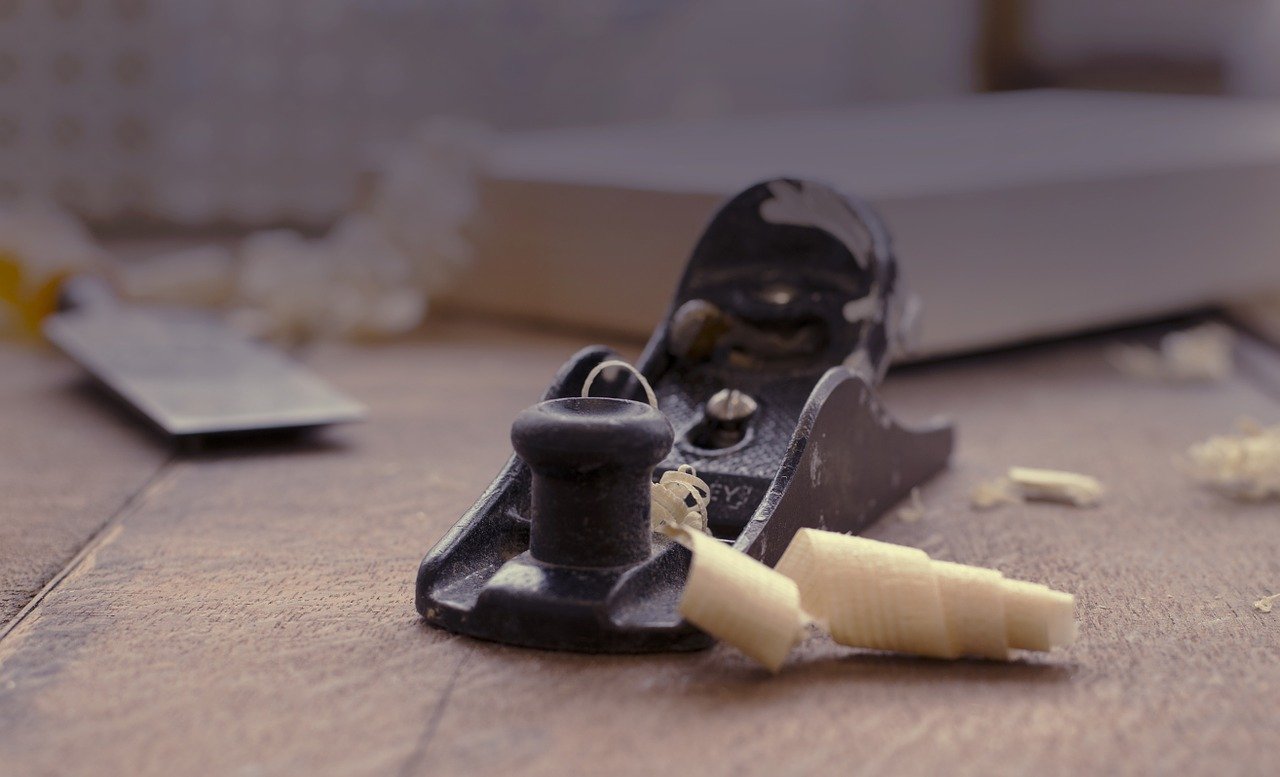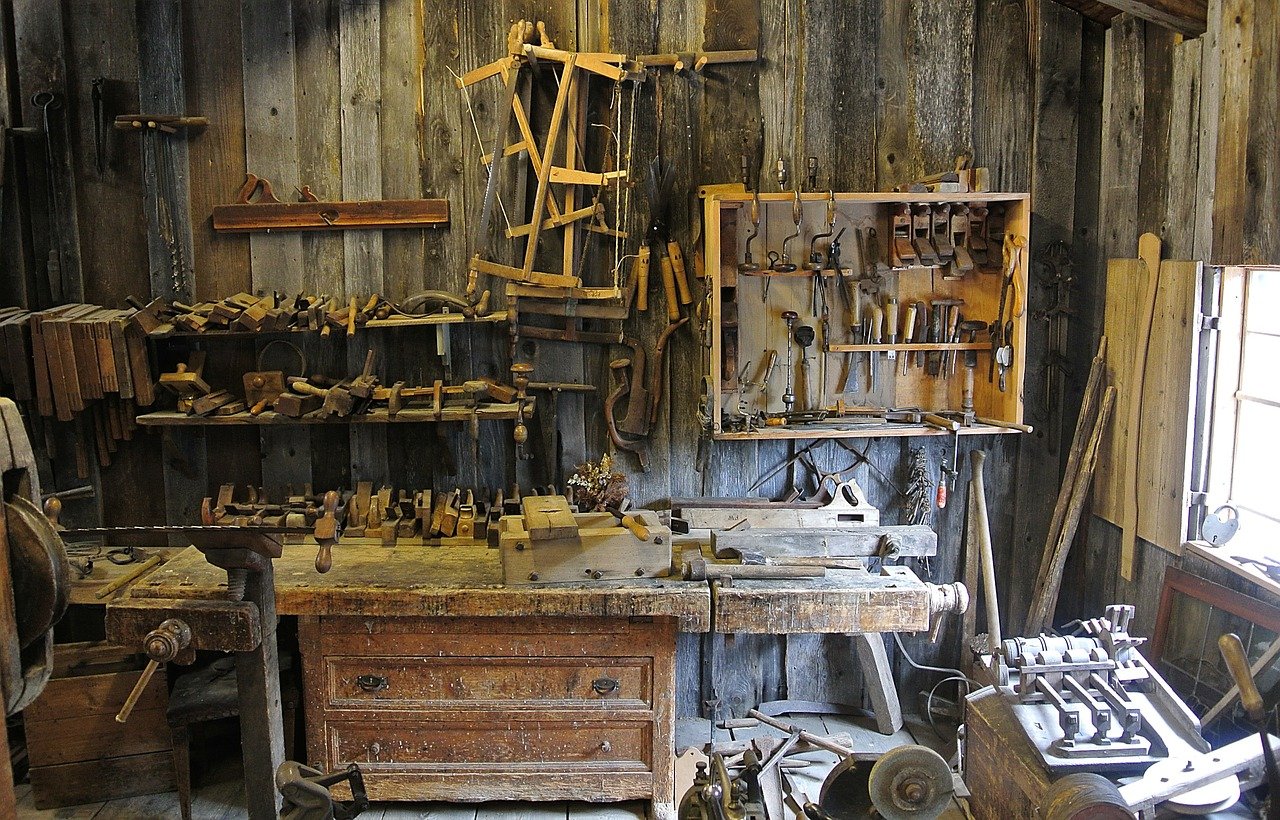Woodworking is a fantastic hobby and a profitable profession. It helps with relieving stress for hobbyists and makes professionals proud of their creations and masterpieces. However, you need the right tools to start woodworking, and if you started unprepared, you will lose time and effort searching for what’s missing. For any hobbyist or professional alike, there are some basic tools you must have to start your DIY project successfully.

Assembly and Measurement Tools
Any household must have a hammer for general-purpose use around the house. Woodworking needs hammers as well to pound and pry the piece of wood you’re working on. As with any other tool, hammers come in different types and sizes, each one with a different use. Mallets are another striking tool, yet they are used in a different way than hammers. While hammers deliver shocks and leave marks on the surface of the wood piece, mallets absorb the shock, which is ideal for tapping wood joints together. Power drills are flexible, as you can use them for various reasons other than drilling holes, while screw guns are essential for fastening, and they are much faster than a standard screwdriver.
The saying goes “measure twice, cut once,” and that’s why measurement tools are crucial, as you plan ahead precisely before making the first cut. You need a tape measure and squares to calculate angles.
Saws
Almost every woodworking project needs a saw to cut through different kinds of wood, then crosscut them to start forming a shape. However, there are numerous kinds of saws, and each one is suitable for a task. You don’t have to buy all kinds of saws, just the ones you need for your project.
The most common woodworking saws are:
- Circular Saw: this electrically powered saw is one of the “must-have” tools you should buy. They are mainly used for cutting large pieces of wood, and they cut in a straight clean line. They come in different sizes, from smaller handheld to larger table saws. Circular saw blades have three types: ripping, crosscut, and combination blades, and each one is suitable for a different task.
- Jigsaws or Bandsaw: both of these saws are good at cutting intricate curved lines for detailed work. Jigsaws are handheld and suitable for beginners. Bandsaws are more accurate and can cut thick pieces of wood.
- Table Saw: basically, it is a table with a saw, which is the centerpiece of any woodworking workshop. They are perfect for beginners, as they offer a smooth learning curve, and they can make any type of cuts easily. They are equipped with many features that can make woodworking easier. If you read more here, you can check out the different table saw features and pick one that will suit your needs. Keep in mind that table saws are the most expensive tool you will have in your woodworking workshop, so it is best to choose wisely.
- Handsaws: the traditional handsaw is an important tool and has been important for hundreds of years in woodworking. They are used for quick work or precision cuts, they are light, and they don’t need any power to operate.

Sanding Tools, Planes, and Files
After finishing the cutting phase of wood, no matter how smooth your saw is, the project surface must be refined to give it a smooth look and feel. Refining it with sandpaper is both exhausting and tedious. Luckily, there are automatic sanding tools available that can speed up the process. Orbital sanders do the process much quicker; however, keep in mind, they spin the sandpaper disk in a circle, which leaves circular marks on the surface. A random orbital sander will not leave any patterned marks, so it’s the more favorable purchase.
Planes cut pieces of wood with more precision than sawing tools, as they use a specific kind of blades to shave off wood fibers, leaving the surface smooth. You still need to use sanding tools to make the surface of the workpiece smooth.
Finally, hand files are considered to be the best tool to shape and smooth wood surfaces. There are many types of hand files, including rasps, half-round files, and mill files. Make sure to buy one made from high-quality steel, which will last for a long time with you. Sharpening your hand files won’t make them be as efficient as before, so it’s better if you replaced them.
Make sure to stay safe while woodworking by wearing protective gear to protect your eyes from flying wood chips or sawdust. When assembling your woodworking tools, always go for quality, as it will prove to be the smarter investment in the long run. You can ask a professional about the tools you need for a specific project you work on to clear any confusion and buy the needed tools only.
